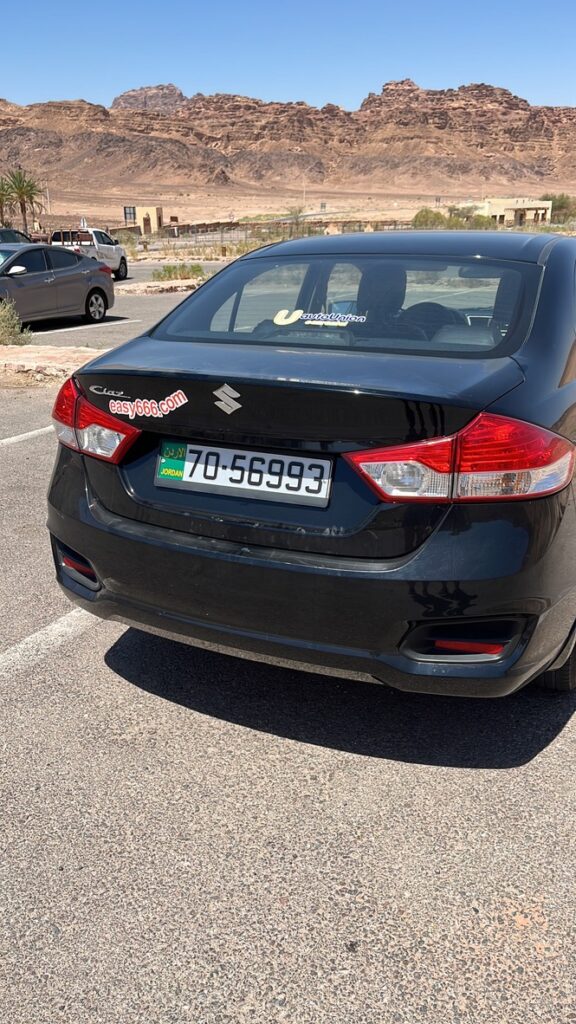Driving in Jordan
Driving in Jordan: everything you need to knwo for a smooth journey
One of the most important decisions you’ll make when visiting Jordan is how to get around. My suggestion? If you’re comfortable driving abroad, driving in Jordan is one of the best ways to explore this beautiful country at your own pace. While driving in a foreign country might seem daunting, I’m here to reassure you that driving in Jordan is easier than you might expect.
Why driving in Jordan is a great option
The country’s road network is well-developed, and all road signs are written in both Arabic and English, making navigation straightforward. Most roads are in good condition, and three major highways connect Jordan’s key destinations:
- The Dead Sea Highway: Scenic and relaxing, it follows the shores of the Dead Sea.
- The King’s Highway: A historic route with winding paths through ancient sites and charming villages.
- The Desert Highway: A faster, more direct route ideal for long-distance travel.
Despite these advantages, there are a few quirks and local driving habits you should be aware of before hitting the road.
Key things to know about driving in Jordan

Watch Out for Speed Bumps
Speed bumps are common, even on highways. While they’re usually marked, some may lack proper signage or have signs placed after the bump. Stay alert, especially when passing through small villages where speed bumps are frequent.
Expect Unusual Highway Crossings
It’s not uncommon to see people, animals, or even camels crossing highways. Drive cautiously, especially near villages or rural areas.
The Honk Is the Universal Language
Horns are used for everything: saying hello, warning others, or signaling a potential issue. Don’t take it personally—it’s just part of the local driving culture.
Lanes Are Flexible
Road lanes in Jordan can feel more like guidelines than rules. On roads marked with three lanes, you might find cars squeezing into four. Go with the flow, keep calm, and adjust accordingly.
Expect Police Checkpoints
Tourism police often set up checkpoints to check passports and driver’s licenses. These stops are routine and quick. Be polite, cooperate, and you’ll be on your way in no time.
Pedestrian Crossings Are Rarely Used
In cities, pedestrians often cross roads without designated crossings. Drivers are skilled at adjusting their speed to avoid accidents, but it’s a mutual trust exercise.
If you’re visiting Wadi Rum, you won’t need to drive in the desert yourself. Camps and tours will arrange for you to park your car and take a 4×4 ride into the desert. Driving on sand is extremely challenging, even for experienced drivers. During our tour, our guide Salah had to deflate the tires to get unstuck and even reverse uphill to conquer a sand dune. The condition of many 4×4 vehicles reflects the tough terrain, so leave this adventure to the experts.
Driving in Amman: Proceed with caution
While driving in most parts of Jordan is manageable, driving in Amman is a different story. The city’s traffic is chaotic, with fluid rules, frequent honking, and constant lane-switching. If you’re not a seasoned driver abroad, I recommend avoiding driving here altogether.
Instead, use Uber or other ride-hailing apps—they’re affordable and reliable. Alternatively, consider starting your trip in Madaba, a calmer city near Queen Alia International Airport. For travelers following my 14-day Jordan itinerary and not feeling comfortable driving, I suggest skipping Amman as a driving base. You can either spend a night in Jerash before heading to Amman or use private tours for day trips.
Final thoughts
Driving in Jordan offers flexibility and a unique way to explore the country’s stunning landscapes and ancient treasures. While there are some cultural and logistical differences, a little preparation goes a long way in ensuring a safe and enjoyable road trip. From the scenic King’s Highway to the peaceful desert roads, driving in Jordan is an adventure worth experiencing—just be ready for a few surprises along the way!
